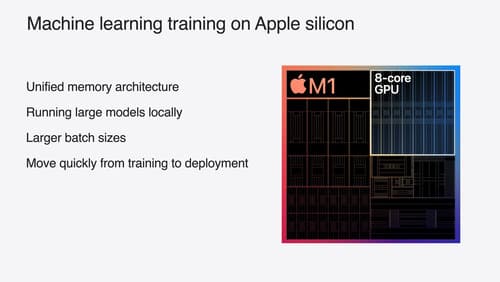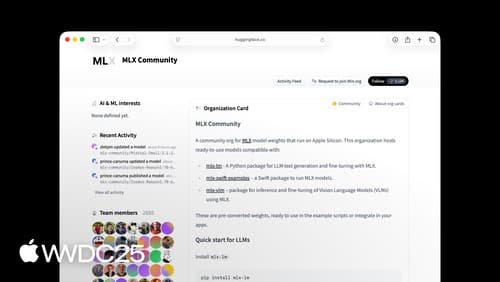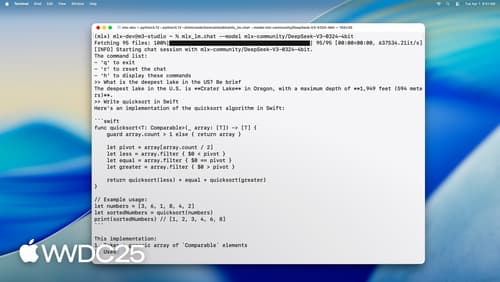MLX
Asked on 2025-10-23
1 search
MLX is an open-source array framework specifically designed for Apple Silicon, offering a flexible tool for a wide range of machine learning tasks, from basic numerical computations to running large-scale models. It supports features like a NumPy-like API, just-in-time compilation, distributed training, and unified memory, making it highly optimized for Apple devices.
Key Features of MLX
-
Unified Memory Architecture: MLX takes advantage of Apple Silicon's unified memory, allowing the CPU and GPU to share the same physical memory. This eliminates the need for data copying between devices, enhancing performance and efficiency.
-
High-Level APIs: MLX provides APIs in Python, Swift, C, and C++, making it accessible for developers familiar with these languages. The Python API is particularly similar to NumPy, easing the transition for those familiar with it.
-
Machine Learning Capabilities: MLX supports automatic differentiation, function transformations, and includes higher-level packages for building and optimizing neural networks. It also offers tools for quantization, which can reduce memory requirements and increase inference speed.
-
Large Language Models: MLX is well-suited for running large language models on Apple Silicon, enabling inference and fine-tuning of massive models directly on a Mac. This is particularly useful for applications requiring privacy, as data does not need to leave the device.
-
Open Source and Community Support: MLX is fully open source under the MIT license, with an active community on platforms like Hugging Face, where many models are readily available.
For more detailed information on MLX, you can refer to the session Get started with MLX for Apple silicon (01:15) and Explore large language models on Apple silicon with MLX (00:00).

Train your machine learning and AI models on Apple GPUs
Learn how to train your models on Apple Silicon with Metal for PyTorch, JAX and TensorFlow. Take advantage of new attention operations and quantization support for improved transformer model performance on your devices.

Get started with MLX for Apple silicon
MLX is a flexible and efficient array framework for numerical computing and machine learning on Apple silicon. We’ll explore fundamental features including unified memory, lazy computation, and function transformations. We’ll also look at more advanced techniques for building and accelerating machine learning models across Apple’s platforms using Swift and Python APIs.

Explore large language models on Apple silicon with MLX
Discover MLX LM – designed specifically to make working with large language models simple and efficient on Apple silicon. We’ll cover how to fine-tune and run inference on state-of-the-art large language models on your Mac, and how to seamlessly integrate them into Swift-based applications and projects.
